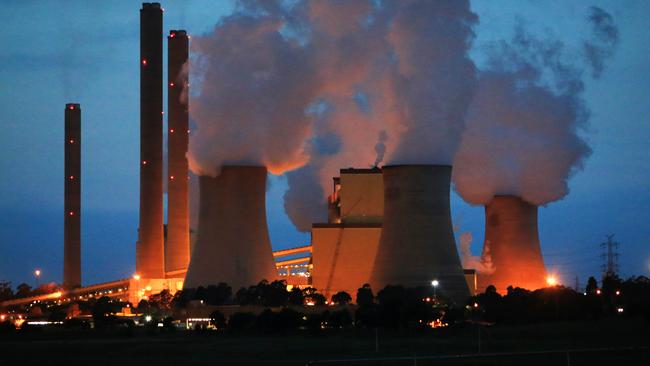Solar pushing coal plants to early extinction says ESB’s Kerry Schott
Energy Security Board tsar Kerry Schott delivers grim warning for coal fleet, saying owners won’t be able to make them pay.

Australia’s fleet of coal-fired power plants faces early closure as renewables continue to heap pressure on their profitability during daylight hours, the government’s Energy Security Board has warned.
Coal, which currently provides 70 per cent of electricity, will contribute less than a third of supply by 2040 and could be forced out earlier than planned retirement dates, as competition from renewables and carbon constraints render plants uneconomic, official forecasts show.
ESB chair Kerry Schott said coal plants could struggle to receive any value for their generation when undercut by renewables that could produce at close to zero cost.
“These plants are losing money,” Ms Schott told the Generation Summit conference on Tuesday. “As more and more renewables come in, they are getting more and more commercially challenged.”
The high level of new renewables supply is putting the power grid on par with the Australian Energy Market Operator’s step-change scenario, which could see early coal plant retirements.
“Instead of these plants going at the years you’ve got them at now, they will go earlier, and on the step-change scenario they probably go four of five years earlier because they’re not making any money,” Ms Schott said. “And they may go before that. So it makes it very difficult for companies that own those plants to justify maintaining them and it also makes it difficult for them to justify keeping them running.
“So we’ve got a challenge in that regard.”
The ESB has previously suggested that adding a new price mechanism reflecting the important reliability role provided by power stations through a “capacity market” could help spur investment before coal plants retire.
AEMO has previously warned a plant like EnergyAustralia’s Yallourn station in Victoria could be forced out of the system as early as 2026, compared with its 2032 retirement based on Victorian government renewable and emissions targets which threaten the viability of baseload generation.
AGL Energy is also among Australian generators being forced to rethink how it runs coal plants as earnings margins get squeezed during daytime hours by cheap solar.
The difference between the cost of coal production and the price it receives for electricity has fallen to less than $20 per megawatt hour, piling pressure on generators reliant on the fuel to consider lowering their output or changing bidding patterns into the grid.
A flood of solar often pushes spot prices to low or even negative levels during the day, creating a headache for coal plants.


To join the conversation, please log in. Don't have an account? Register
Join the conversation, you are commenting as Logout